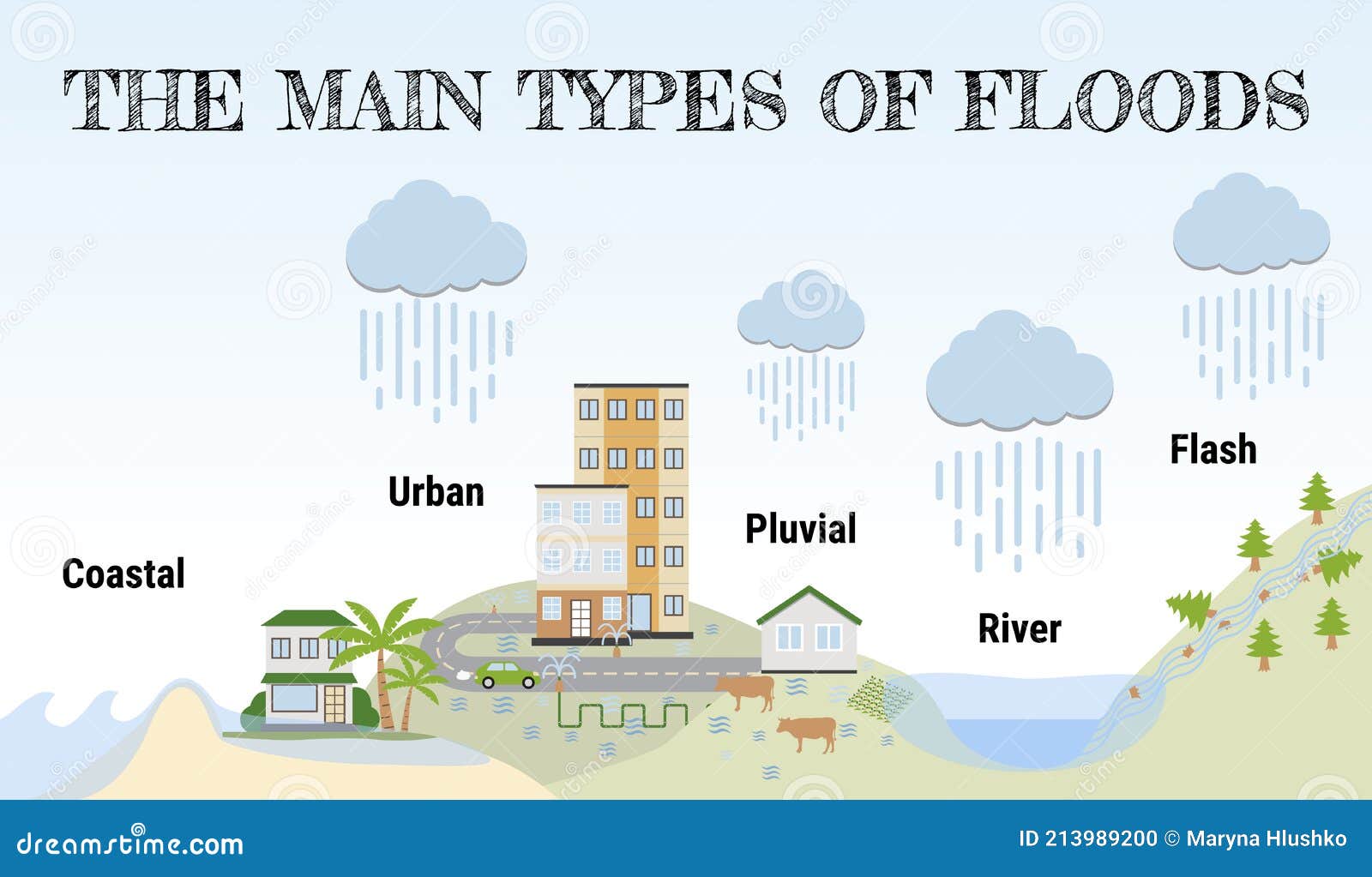How To Recognize And Respond To A Flash Flood Emergency

Table of Contents
Recognizing the Signs of an Impending Flash Flood
Understanding the potential for flash floods in your area is the first step in effective preparedness. Knowing what to look for can provide precious time to react and save lives.
Understanding Flash Flood Risk Factors
Flash floods can occur anywhere, but some areas are more prone than others. Understanding these risk factors can help you assess your vulnerability.
- Geographical Location: Mountainous regions, deserts, and urban areas with inadequate drainage systems are particularly susceptible to flash floods. The steep slopes in mountainous areas allow water to rush down quickly, while deserts lack the vegetation to absorb rainfall. In cities, poor drainage can lead to rapid water accumulation.
- Heavy Rainfall: Intense rainfall in a short period is the primary cause of flash floods. Even relatively small amounts of rain can overwhelm drainage systems and cause rapid flooding.
- Rapid Snowmelt: Rapid melting of snow, especially during spring thaws or sudden temperature increases, can contribute significantly to flash flood events.
- Dam Failures: Dam failures, though less frequent, can cause catastrophic flash floods downstream, releasing massive amounts of water with little to no warning.
- Weather Forecasts and Alerts: Regularly checking local weather forecasts and alerts is critical. Pay close attention to flash flood warnings and watches issued by meteorological agencies. These alerts indicate a heightened risk and should prompt immediate action.
Visual and Auditory Warning Signs
Recognizing visual and auditory clues can be crucial in alerting you to an impending flash flood, even before an official warning is issued. Be vigilant and look out for:
- Rapidly Rising Water Levels: A sudden and significant increase in water levels in streams, creeks, rivers, or normally dry washes is a major warning sign.
- Increased Water Flow Velocity: Noticeably faster-moving water in normally slow-moving streams or rivers indicates increased water volume and potential flash flooding.
- Muddy Water: A change in water color from clear to dark, muddy, or brown indicates sediment runoff, often associated with flash flood conditions.
- Approaching Rushing Water: The sound of approaching rushing water, even from a distance, is a clear indication that a flash flood may be imminent.
- Debris Flow: Seeing debris, such as logs, branches, and trash, flowing in normally dry areas or channels signifies increased water volume and potential flooding.
Immediate Actions During a Flash Flood
When a flash flood is imminent or has begun, prompt action is vital for survival.
Evacuation Procedures
Following evacuation orders immediately is non-negotiable. Time is of the essence during a flash flood.
- Evacuation Orders: Obey all evacuation orders issued by local authorities without delay.
- Gather Essentials: Quickly gather essential documents (identification, insurance papers), medications, and a small amount of emergency supplies (water, non-perishable food, first-aid kit).
- Safe Evacuation Routes: Familiarize yourself with pre-planned evacuation routes and designated meeting points. Avoid areas known to flood easily.
- Never Drive Through Floodwaters: Turn around, don't drown. Floodwaters can be deceptively deep and swift, easily sweeping away vehicles.
Seeking Shelter
If evacuation is not possible, seek shelter in a safe location.
- Upper Floors: If you are in a building, move to the upper floors.
- Higher Ground: If you are outdoors, move to higher ground, away from flood-prone areas.
- Sturdy Structures: Seek shelter in a sturdy structure that can withstand flooding.
- Secure Your Home: Move valuable items to upper levels, turn off utilities (gas, electricity), and secure any loose objects that could be swept away.
- Stay Informed: Continuously monitor weather reports and news updates for information about the flash flood's progression.
Personal Safety Measures
Personal safety is paramount during a flash flood.
- Avoid Floodwaters: Never attempt to walk, swim, or drive through floodwaters. The currents can be incredibly strong and hidden dangers (e.g., debris, downed power lines) lurk beneath the surface.
- Electric Shock: Beware of downed power lines, which present a significant electric shock hazard.
- Protective Gear: If wading in shallow water is absolutely necessary, wear protective gear, including waterproof boots and gloves.
Post-Flash Flood Actions
After the flash flood subsides, there are several important steps to take.
Assessing Damage and Reporting
After the immediate danger has passed, assess any damage to your property and report it to the appropriate authorities.
- Structural Damage: Carefully inspect your home and property for structural damage, including foundation cracks, damage to electrical systems, and water damage.
- Reporting Damage: Contact your local authorities to report any damage and request assistance if needed.
- Insurance Claims: Document all damages with photos and videos for insurance claims.
- Disaster Relief: Explore available disaster relief resources and assistance programs offered by government agencies and non-profit organizations.
Cleaning and Sanitation
Floodwaters are often contaminated with sewage and other harmful substances.
- Contaminated Water: Floodwaters are dangerous and should be avoided. Assume all floodwaters are contaminated.
- Cleaning and Sanitizing: Follow proper procedures for cleaning and sanitizing affected areas to prevent the spread of disease. Use disinfectants and follow safety precautions.
- Waste Disposal: Dispose of damaged property and debris according to local guidelines.
Long-Term Recovery
Recovery from a flash flood is a long-term process.
- Flood Prevention: Take steps to mitigate the risk of future flash floods, such as improving drainage around your property, planting vegetation to absorb water, and reinforcing structures.
- Family Emergency Plan: Develop a comprehensive family emergency plan that includes flash flood preparedness, evacuation routes, and communication strategies.
- Mental Health Support: Seek mental health support if needed; flash floods can be incredibly traumatic.
Conclusion
By understanding how to recognize and respond to a flash flood emergency, you can significantly reduce your risk and protect your family. Flash flood preparedness is crucial for minimizing damage and ensuring safety. Developing a comprehensive flash flood preparedness plan, including identifying potential risks in your area and establishing evacuation routes, is a vital step in ensuring your safety. Don't wait until it's too late – create a family emergency plan that includes flash flood safety and response procedures today! Practice your plan regularly, and stay informed about weather conditions and flash flood warnings. Your proactive efforts can make all the difference in surviving a flash flood.

Featured Posts
-
 Used Porsche Macan Buyers Guide Tips For Finding A Great Deal
May 25, 2025
Used Porsche Macan Buyers Guide Tips For Finding A Great Deal
May 25, 2025 -
 Rising Temperatures The Spread Of Internal Parasite Fungi
May 25, 2025
Rising Temperatures The Spread Of Internal Parasite Fungi
May 25, 2025 -
 Flash Flood Emergency Definition Causes And Prevention Strategies
May 25, 2025
Flash Flood Emergency Definition Causes And Prevention Strategies
May 25, 2025 -
 The Week That Derailed Joe Bidens Post Presidency A Comprehensive Analysis
May 25, 2025
The Week That Derailed Joe Bidens Post Presidency A Comprehensive Analysis
May 25, 2025 -
 Potential Canada Post Strike Assessing The Risk To Customer Loyalty
May 25, 2025
Potential Canada Post Strike Assessing The Risk To Customer Loyalty
May 25, 2025
Latest Posts
-
 Italian Open Chief Top Players Elevate Chinese Tennis Culture
May 25, 2025
Italian Open Chief Top Players Elevate Chinese Tennis Culture
May 25, 2025 -
 Italian Open Zheng Qinwen Through To Last 16
May 25, 2025
Italian Open Zheng Qinwen Through To Last 16
May 25, 2025 -
 Chinese Tennis Sensation In Italian Open Quarterfinals
May 25, 2025
Chinese Tennis Sensation In Italian Open Quarterfinals
May 25, 2025 -
 Zheng Qinwen Advances To Italian Open Last 16
May 25, 2025
Zheng Qinwen Advances To Italian Open Last 16
May 25, 2025 -
 Italian Open Chinese Tennis Player Secures Quarterfinal Spot
May 25, 2025
Italian Open Chinese Tennis Player Secures Quarterfinal Spot
May 25, 2025
